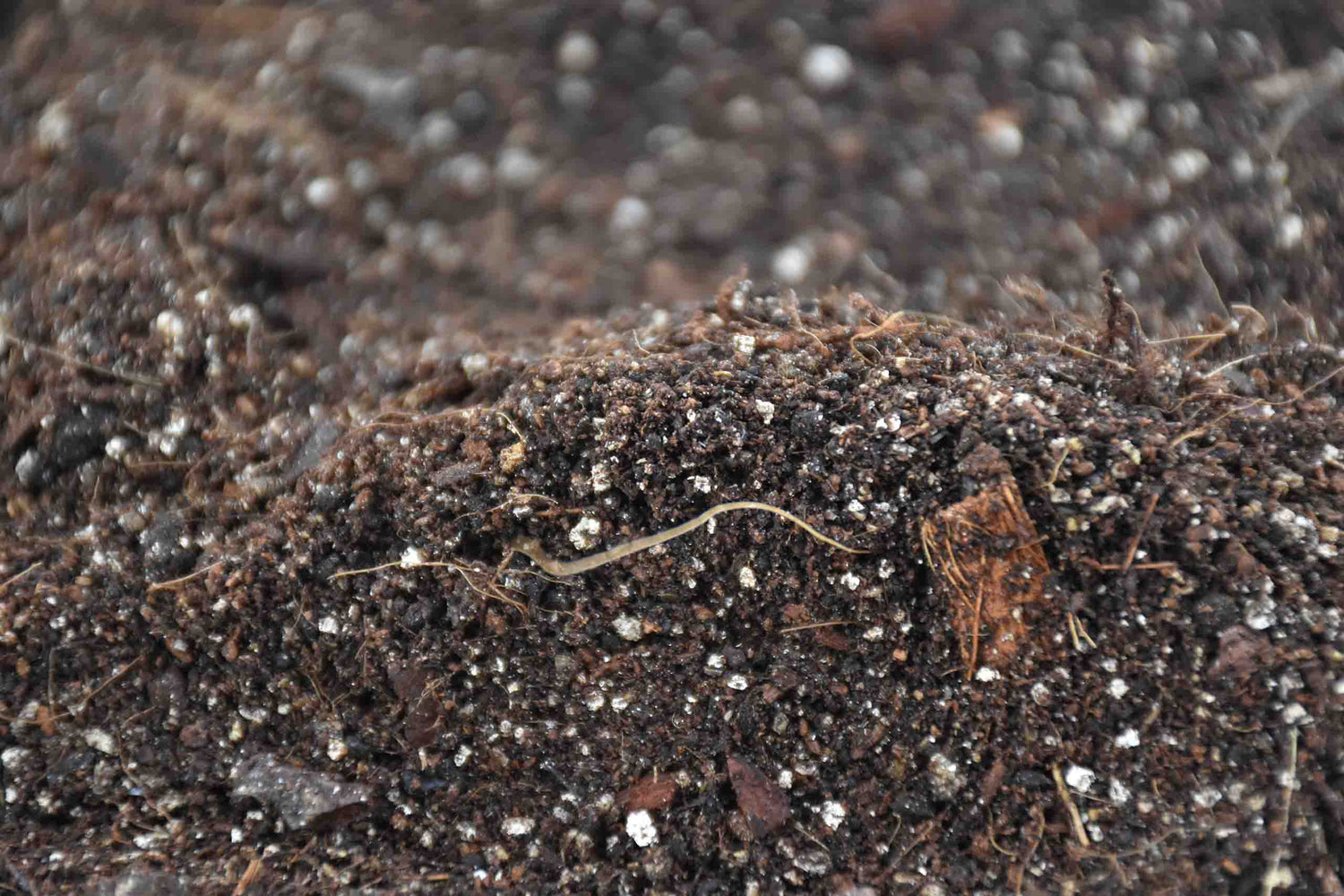Perlite! The popcorn of the soil additives. It is not only a staple in most potting soils, this volcanic rock has many more applications.
Why Use Perlite?
Advantages:
Perlite has many advantages and is a great additive to soil mixes. It is used in most of the SYBASoil mixes and for a reason.
- It improves drainage and aeration in the soil, allowing oxygen into the roots and preventing root rot
- It retains a bit of water while allowing the rest to drain away
- Useful both as an additive and in soilless mediums
- It is light-weight
- It is PH-neutral
- It is strong and retains its shape when pressed in the soil
- It is inorganic, inert, and sterile
- It does not decompose
Disadvantages:
While it is a great medium, there are some less-than-ideal things about perlite.
- Regular perlite is dusty and dangerous to inhale (ours is already cleaned)
- For some plants, the drainage is too much (like Alocasia), use vermiculite instead
What Is Perlite?
Perlite is a lightweight medium that feels comparable to styrofoam. Perlite is a mineral that is mined in a hard glass form, and it is then heated to pop and expand into the perlite you can buy (just like popcorn!).
How to Use Perlite
Perlite as a Rooting Medium for Cuttings
Perlite is a great rooting medium that can both be used as a standalone and in combination with a coco coir and worm castings base.
Learn more about the benefits of worm castings and how they enrich the soil.
Perlite as a Soilless Medium
Perlite is great to use as a hydroculture medium. Fill a cup with perlite and fill 1/3th with water. The water will evaporate and be pulled up towards the roots of the plant. It is important to add nutrients as perlite contains none.
Perlite to Sow Seeds
Use a 1:1 mix of perlite and coco coir to sow seeds in. The perlite speeds up germination and improves seedling growth as it allows water to be released slowly to the seeds.
Perlite as a Soil Additive
As discussed previously, perlite improves drainage and aeration and is a great addition for most plants.
Perlite v.s. Vermiculite
While both are inorganic, inert, and lightweight. There are a couple of differences between the two. Simply put, vermiculite holds more water and has a slightly higher lower PH than perlite. For most plants, perlite is the best option, but for water-loving plants like Alocasia vermiculite may be better.
Curious how perlite and vermiculite compare in detail? Check out our perlite vs. vermiculite guide for a full breakdown.
Is Perlite Harmful?
Perlite is very dusty; be careful not to inhale the dust. There is a trick to prevent this:
- Add water to the bag of perlite (about 10% of the volume)
- Shake the bag
- Let it sit for an hour
- Shake the bag again
Our perlite is cleaned from dust as we do the above process for you. Beware that there might be a small bit left, but nowhere near regular, uncleaned perlite.
Have more questions about perlite? Check out our perlite FAQ for everything you need to know.


